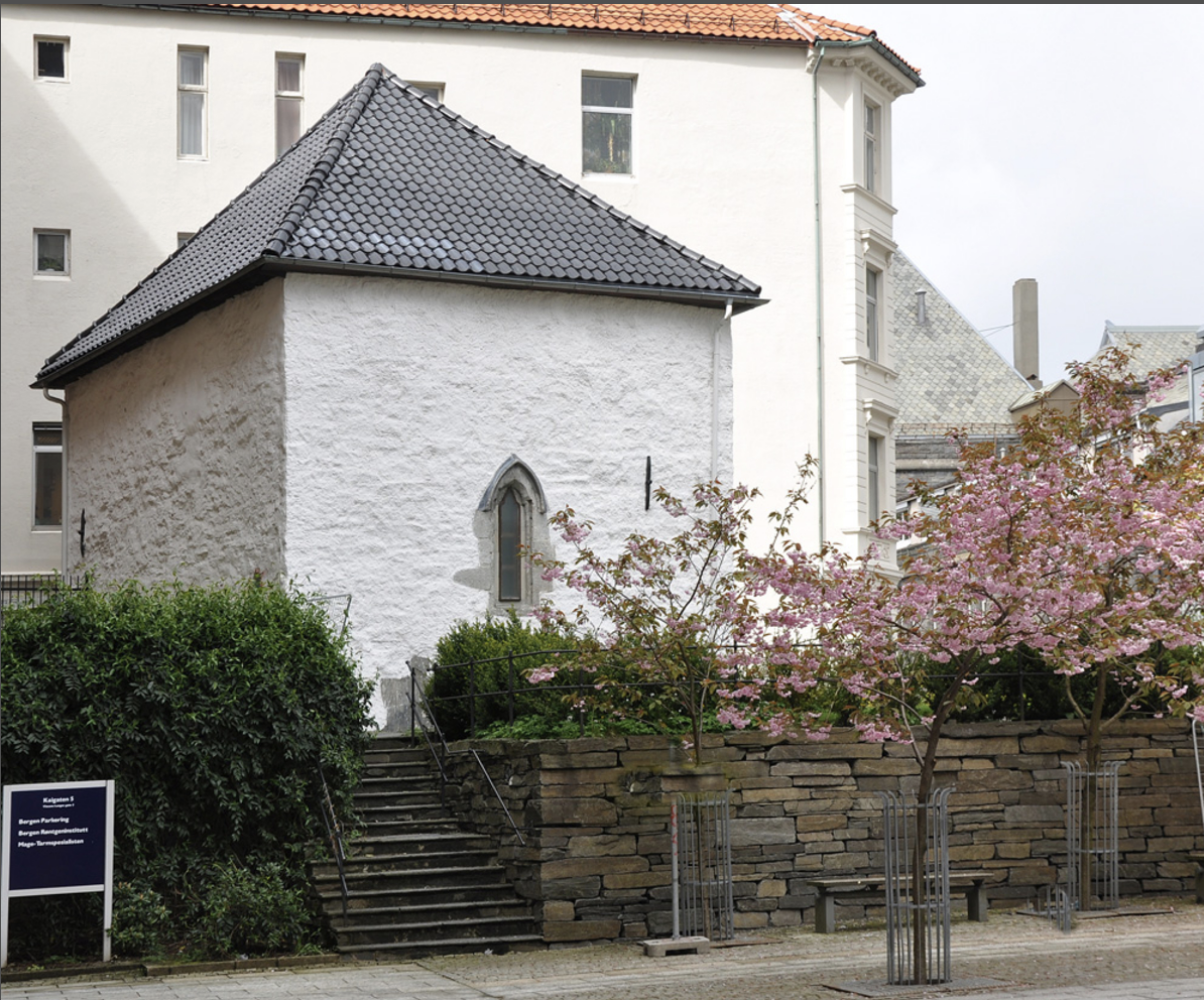Nonneseter
Nonneseter was once one of Bergen’s most significant religious institutions — the Old Norse word Nunnusetr translates as ‘where the nuns live’. The monastery originated in the 12th century, and today there are two remaining parts of this Benedictine nunnery, the chapel and the tower base, both of which are protected heritage sites.
As part of across, with, nearby, artists Monica Ursina Jäger and Lapdiang Artimai Syie engage with Nonneseter not only as a historical site, but as a resonant space for storytelling, reflection, and contemporary witnessing. By reactivating its stone chambers, which were once dedicated to ritual and memory, the artists bring other temporalities and geographies into conversation with Bergen’s layered urban history.
The Nonnester Chapel was added to the nunnery’s church in 1250 and its vaulted room has details including two ribbed cross-vaults and pointed arches. Nestled between the railway station, shopping centre, tramlines, and abandoned factory buildings, the chapel is passed by thousands of people every day, and yet goes mostly unnoticed.
Just across from this site stands the Tower Base. Built in the early 1100s, it is the oldest surviving structure in Bergen and a significant historical site. Once part of a larger church tower, it is now a single-story structure with a round-arched, cross-vaulted ceiling. A bronze memorial by Hans Jacob Meyer titled Mother and Child is permanently installed here to commemorate Bergen residents who lost their lives during World War II.
Accessibility
There are stairs up to both Nonneseter Chapel and Tårnfoten, and are not accessible by wheelchair

What’s on?
No scheduled events
View full programme